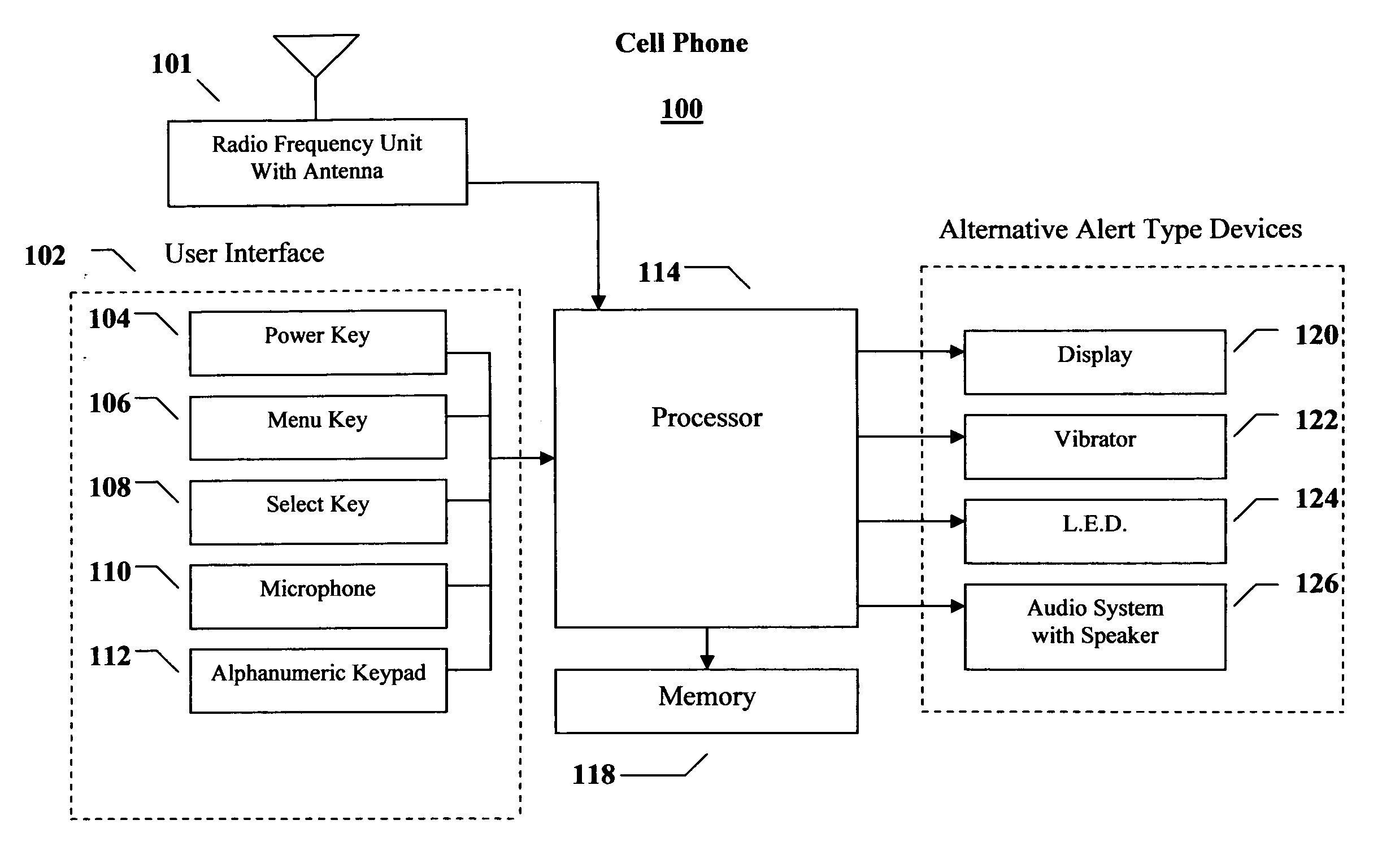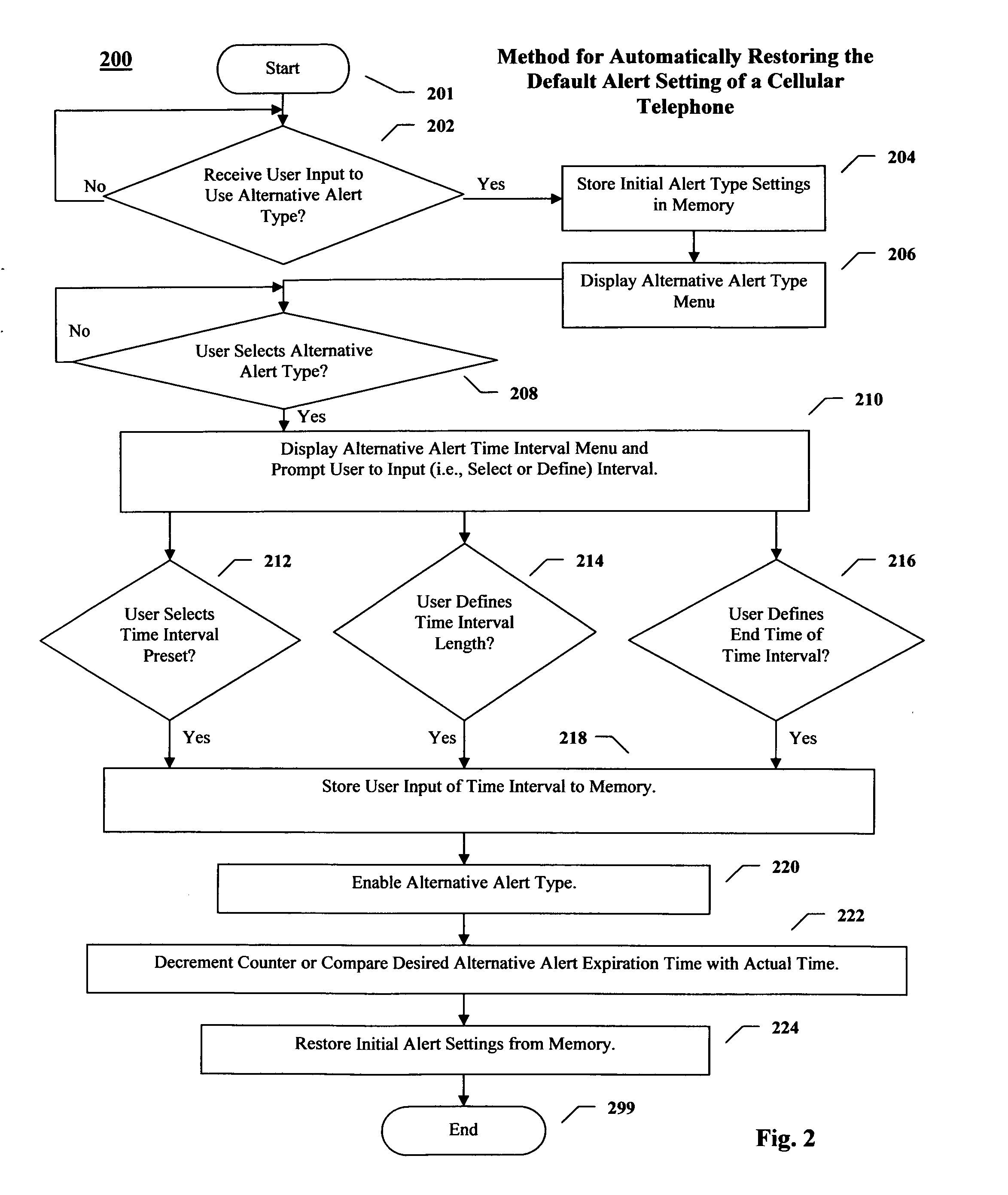Method for automatically restoring the default alert setting of a cellular telephone
a technology of cellular telephone and default alert setting, which is applied in the field of mobile cellular telephone technology, can solve the problems of user's inability to ensure that the user of such cell phone will remember, user may miss a time-sensitive call, and user is likely to miss calls, so as to avoid missed calls
- Summary
- Abstract
- Description
- Claims
- Application Information
AI Technical Summary
Benefits of technology
Problems solved by technology
Method used
Image
Examples
Embodiment Construction
[0013] The present invention can be better understood with reference to FIGS. 1 and 2. FIG. 1 is a view illustrating a block diagram of a cell phone 100 in accordance with the preferred embodiment of the present invention. But it should also be understood that the scope of this invention also applies to other mobile electronic and wireless communications devices, such as pagers.
[0014] Referring to FIG. 1, the cell phone 100 includes a radio frequency unit 101 with an antenna to support a radio link to a wireless communications network infrastructure. The cell phone 100 receives input from a user of the cell phone (“user input”) via a number of cell phone interfaces 102, including function keys (e.g., power key 104, menu key 106, and select key 108), a microphone 110 to receive audio input, and an alphanumeric keypad 112 to receive alphanumeric user input. The features of cell phone 100 are described in more detail below.
[0015] Alphanumeric keypad 112, power key 104, menu key 106, ...
PUM
 Login to View More
Login to View More Abstract
Description
Claims
Application Information
 Login to View More
Login to View More - R&D
- Intellectual Property
- Life Sciences
- Materials
- Tech Scout
- Unparalleled Data Quality
- Higher Quality Content
- 60% Fewer Hallucinations
Browse by: Latest US Patents, China's latest patents, Technical Efficacy Thesaurus, Application Domain, Technology Topic, Popular Technical Reports.
© 2025 PatSnap. All rights reserved.Legal|Privacy policy|Modern Slavery Act Transparency Statement|Sitemap|About US| Contact US: help@patsnap.com



